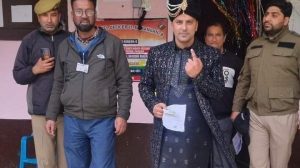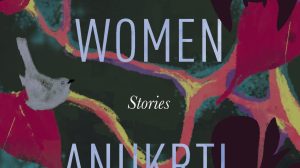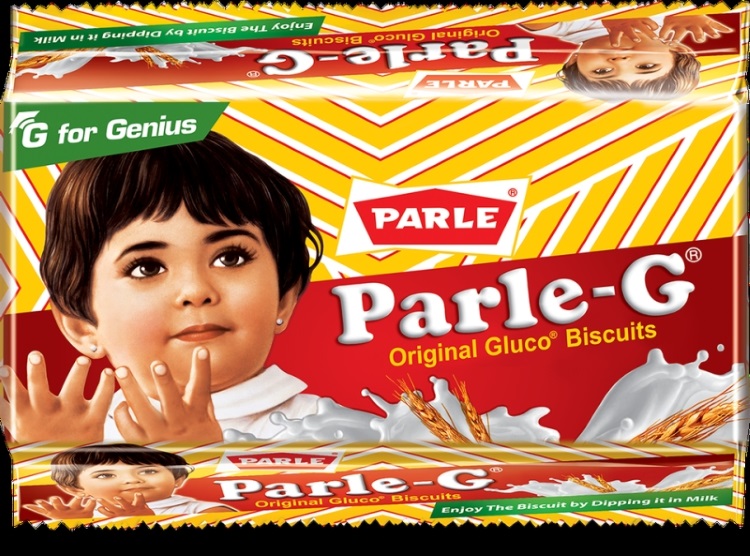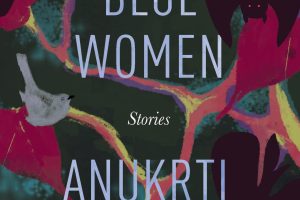The book “A History Of Indian Advertising In Ten-And-A-Half Chapters” by Ritu Singh discusses the best of case studies and unbusiness-like stories from Indian advertising through the ages – the hits, the misses, the also-rans and the banned.
Indian advertising has enriched our lives with quirky quips, unforgettable characters, inter-brand scuffles, clever insights, virtual lures and jaw-dropping controversies. The book describes the history and contemporary developments in the advertising and marketing of many Indian products and brands.
This book is an engrossing read, and will inform as much as entertain all readers.
Read an excerpt from the book below.
For decades now we have been dunking sweet Parle-G biscuits into sweeter chai while idly discussing the identity of the child featured on the iconic white-and-yellow-striped biskut packet. ‘Woh kaun thi?’ we wonder.
For the longest time there was no consensus on who this girl was. Was is it even a girl at all? (Though the all-knowing ones did point out that it had to be a girl because of the Bollywood-heroine-inspired fringe, also known as the Sadhana-cut, which a whole generation of sadistic 1960s’ mothers inflicted on their unsuspecting daughters. Plus the kid wore studs in her ears and as everyone knows, ‘uss zamaane mein boys earrings nahin pehante the, rey!’)
Such is the curiosity inspired by the girl that question answer sites are, in fact, crawling with detectives claiming to possess definite knowledge of her identity.
‘Revealed: The Parle-G girl is Sudha Murthy.’
‘Just revealed: the Parle-G girl is Gunjan Gudaniya.’
‘Finally revealed: Parle-G girl badi ho kar Airtel 4G girl ban gayi hai.’
Well, it turns out that the Parle-G girl is not a real girl at all, but an illustration created in the 1960s by the company’s advertising agency, Everest Brand Solutions. The rest is all rumour and speculation. (Really? We’ve spent a lifetime speculating on an illustration?)
But that’s not the important thing here. What is important is the sweet brilliance of Parle-G’s branding and marketing. Whatever the age, education or mother tongue of the customer, he or she can identify the biscuit pack they want simply because of the familiar child on it.
*
Parle-G, or Parle Gluco, comes from Parle Products, which owns other biscuit brands like Monaco and KrackJack as well as confectionery brands like Melody, Mango Bite, Poppins and Kismi, among others.
Parle Gluco came into existence around 1939, about a decade after the Parle factory in Vile Parle in Mumbai (that’s where the company’s name was derived from) began producing confectionery like boiled sweets. Initially, they produced military-grade biscuits to supply to the British Army fighting in World War II, but eventually the Parle Gluco biscuits were also manufactured for local consumption. They were marketed as an affordable source of nourishment, and that is the positioning that Parle has more or less stuck to for decades.
During the British Raj, the other biscuits available were expensive – mainly imported brands like Jacob’s Cream Crackers from United Biscuits, Huntly & Palmers biscuits and Glaxo glucose biscuit. Britannia, the other Indian biscuit-maker was based in Calcutta (now Kolkata), and while they were a name to reckon with in the eastern part of India, they did not manufacture glucose biscuits.
In the 1960s, by the time Britannia launched a rival glucose biscuit – Glucose D – there were already a number of other smaller players in the market, many producing glucose biscuits and some of them even producing knockoffs of Parle Gluco. Undiscerning customers would simply walk into shops asking for glucose biscuits, which had become a generic category among biscuits.
The need for a distinguishing factor prompted the Parle girl to make her first appearance. Created as an illustration by Maganlal Dahiya – a creative professional at Parle’s advertising agency Everest Brand Solutions – the Parle girl with her chubby cheeks and large eyes, and wearing a white dress (which, incidentally, she hasn’t changed out of in decades), was instantly liked by mothers and kids alike.
In 1982, Parle Gluco became Parle-G but the girl on its packaging remained constant along with other elements such as the font used for the brand lettering and the white and yellow stripes, though subsequently the stripes changed from horizontal to vertical and then to slanting.
Large-scale branding exercises helped tell consumers how Parle-G was ‘often imitated, never equalled’. It stood out in every way, setting itself apart from biscuits sold in jars. For the customer, digging into a pack of Parle-G has always been about several, quite different things. Of course, Parle-G delivers on taste and nutrition and sometimes even works as a substitute for a meal or in keeping the customer mentally alert. But the crucial factor has always been its affordability as Parle-G’s market is extremely price-sensitive and it is perceived as a value-for-money buy. Since a slight increase in pack prices can result in a temporary dip in demand, Parle has used in-house procurement and packaging solutions to help maintain prices which are still just a few rupees for small packs. This has helped them with market penetration, which in turn has played a vital role in its success and popularity. In 2012, its distribution network covered approximately six million retail stores across the country.
Today, the target audience for Parle-G is mainly six-to twelve-year-old kids and their mothers. But just like before, this biscuit still hits the sweet spots all around the bullseye. Parle-G is consumed by people across ages irrespective of income levels and social backgrounds.
The communication for Parle-G has always been about taste and strength. At one time, the endorser was the home-grown strongman and much-loved superhero, Shaktimaan. The brand has traditionally also done montages with jingles like, ‘Swad bhare, shakti bhare, barson se…Parle-G.’ Then there was a 2003 campaign that embraced the consumer as part of a Parle-G-loving family that extended across the world.
*
By 2011, a study by the market research firm Nielsen proclaimed Parle-G to be the world’s largest-selling biscuit brand. It was said that if you laid every Parle-G biscuit consumed in a year, end to end, you would cover the earth’s circumference over 190 times.
Value-for-money pricing, massive reach and a focus on the mass segment contributed to Parle-G’s success. But a new generation of consumers and product options are now cutting into the demand for glucose biscuits. With competition from brands like Britannia Tiger and ITC Sunfeast, Parle-G has been trying to hold on to its market share. To do this it has even tried to change tack, telling consumers that the ‘G’ really stands for ‘genius’ as the biscuit helps to stimulate intelligent curiosity.
Nevertheless, so iconic is the biscuit, with the woh-kaun-thi little girl on its packaging, that when the brand’s first factory in Vile Parle was shutting down, a whole generation of Mumbaikars mourned that passing by that area would never be the same again without the familiar, delicious aroma of freshly baked Parle-G biscuits wafting through the air.
Even as the articles made the rounds, social media inhabitants with short attention spans eagerly began to post obituaries – for the biscuit brand, for their memories of the many hungry moments when the biscuit had come to their rescue and for the void that would now fill their days. Very few read the news in its entirety, which was that the chief cause for the factory shutting down was the lowered demand for the biscuits, not because the product was being discontinued. Parle-G biscuits would continue to be made elsewhere (at the same low price, mind you), and the kid who contributed so hugely to its popularity and success would live on – she is fine, thank you G.

Excerpted with permission from A History Of Indian Advertising In Ten-And-A-Half Chapters, Ritu Singh, Hachette India. Read more about the book here and buy it here.




















